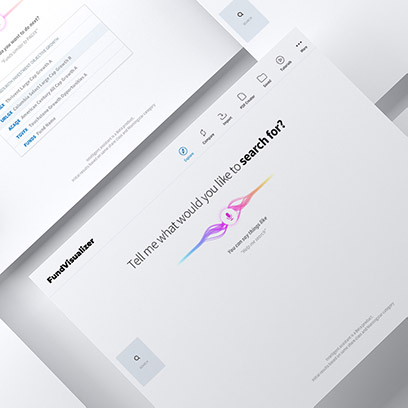Intelligent bots and conversational UIs are emerging trends that promise disruptive opportunities in both consumer and enterprise markets. We believe many of the challenges faced by financial advisors — including information overload, increased competition from robo advisors, and demographic shifts that suggest changing expectations from clients — can be addressed by the right mix of technology, user experience, and expertise built on this new wave of intelligent agents and voice interaction. Overtime, we foresee the need for every financial services organization to master these trends to ensure delivery of compelling and differentiated relationships with current and future clients. We believe the time is now to explore how best to seize the opportunity.
Background
Financial advisors have enjoyed sustained growth over the last few years. Heading into 2017 and beyond, technology, client service and delivery, Portfolio Management Systems (PMSs), and Customer Relationship Management (CRMs) are some areas that should be on the radar to enhance a financial advisor’s competitive position.
This would free them to focus on enhancing client relationships, exploiting emerging niche markets.
Imagine advisors could bring each of these areas into alignment to work for them on their schedule. What if client information from both the PMS and CRM were aggregated with news & market trends and delivered right when and where the advisor needed it? This would free them to focus on enhancing client relationships, exploiting emerging niche markets, or giving them the time necessary to adapt to new compliance requirements.
There wouldn’t be any need to learn a new kind of technology. Instead, voice interaction (or a messaging style conversational interface) would speed adoption and use. The complexity of collecting and presenting relevant information could be collapsed into small, actionable, context-aware chunks of information that enhance how people work now. Whether on the phone, in the car, or at the office, the promise of “the best UI is no UI” is brought to life through the right information delivered at the right time. Sometimes it’s pushed based on triggers it understands to be important. At other times, advisors could query it for key information.
As with other disruptive change, history suggests that the sooner financial organizations master these capabilities and adapt them to the unique needs of their clients, the more likely they will enjoy a competitive advantage. We expect that, overtime, the skill and expertise of an advisor will evolve to include not only their innate knowledge but also the trained expertise they will have developed with their intelligent agent. What begins as a differentiator, then, will evolve into a requirement, where advisors without the benefit of a collaborative, intelligent agent will fall behind on their ability to attract and retain clients. Alternatively, those who start now to invest in the capabilities of their agent will be in a position to create a differentiated client experience.
Trends Overview
By 2020, many analysts expect the market reach and overall impact for bots to exceed that of the app economy. There are a few reasons for this. In the consumer market, people are expressing “app fatigue,” marked by a slowdown in the number of new apps installed and the number of apps frequently used. comScore indicates that 85% of app usage is confined to five or fewer apps per day. This trend is mirrored in the enterprise, which demands much greater aggregation of information to support the cohesive delivery of services. As the breadth of information increases, it stands to reason that the app model — with content siloed across multiple specialist websites or apps — introduces limitations that become increasingly difficult to scale. It’s not that people’s needs have grown somehow simpler, far from it. Rather, their ability to manage information is hitting a wall. People have responded by focusing their attention on a few, useful apps, with some 90% of mobile usage being in email or messaging. In the enterprise, time and productivity pressures demand even greater focus, clarity, and utility.
85% of app usage is confined to five or less apps per day.
The messaging trend is particularly interesting. For the first time in 2016, attention on messaging platforms has exceeded that for social networks. Messaging platforms are emerging as the “glue” that binds disparate information into a cohesive experience, one which provides a ready way for intelligent services to talk to people. As such, both intelligent agents and conversational UIs are natural fits. What all this suggests is a move toward new models of interaction, and new opportunities to improve our efficiency and effectiveness, by taking account of the job messaging, intelligent agents, and conversational UIs are being hired to do.
For the first time in 2016, attention on messaging platforms has exceeded that for social networks.
The Opportunity For Financial Service Companies
When we consider the needs of a financial advisor, natural voice interaction and intelligent agents present a huge opportunity to collect, distill, and present information in ways that are not possible today, unlocking new contexts of use, freeing mind space for client engagement, and contributing to competitive differentiation in the quality of the client experience.
To be clear, we view this not as a recommendation service, but an intelligent assistant which aggregates and prioritizes information to enhance the advisor’s workflow. It doesn’t replace people but amplifies their abilities. By applying principles of anticipatory design, the cognitive burden currently placed on the advisor to track information can be relieved, allowing them to focus on more high-value activities.
We foresee a push/pull model that collects and organizes the right information so it’s available at the right time. The key, we believe, is not only on getting the technology right, but also getting the user experience right. In fact, the most important consideration is that the advisor trust the intelligent agent — it has to deliver on its promise of right time/right place information. The goal is to deliver the best mix of push and pull to provide what the advisor needs when they want it.
On the technology side, information aggregation and intelligent filtering will be necessary to make this happen. Similarly, artificial intelligence covers a wide range of techniques and models, from regression models to deep learning. Organizations should start with simpler, lower-risk methods to develop familiarity and uncover areas of greatest value where additional effort is most likely to pay off. While the technology is available today to make this happen, it’s essential to set appropriate expectations as the intelligent agent learns and adapts over time. To date, many initiatives, such as Microsoft’s “Tay,” have oversold and under-delivered. The market is still learning the best approach, and an intentional roadmap will be key to success.
To emphasize this point, compare the example of Siri versus Alexa. By most accounts, Siri is a much more impressive technical achievement. However, Amazon’s go-to-market strategy with Alexa was to define clearly what it could do (in a more limited and focused way), enable means of growth and expansion through the addition of “skills,” and offer a companion interface for users to tell Alexa where it could improve. As such, users’ expectations were clearly set, initial limitations were a feature, not a bug, and a companion user interface allowed the user to help Alexa improve (and for Alexa to acknowledge the expertise of the user).
In this example, user experience stands as the differentiator, allowing the technology both to communicate and then complete the job it’s being hired to do. Likewise, we see the user experience as the key to fully realizing the potential of intelligent agents and conversational UIs to support and enhance the work that advisors undertake.
We view this as a highly valuable area for additional exploration and research, both on the technical as well as on the user experience side.
Design Story: Sarah and Julie
Julie is about to celebrate her 5th year as an independent financial advisor after 10 years under the umbrella of a large financial firm. Today, she’s proud to have over 300 clients, $25M in AUM, and two beautiful, young boys in elementary school. She balances healthy brown bag lunches almost as well as she does portfolios (though her son Finn thinks she goes a bit heavy on the fruit). During the school year, she begins each day dropping the boys off at Westwood Elementary School and commuting 40 minutes to her office in Boston’s Back Bay.
In her ideal world, she’d provide high touch, tailored advice to suit each of her clients’ individual investment objectives. In the real world, however, the demands of providing sound financial advice while simultaneously managing business logistics and raising a young family leaves her stretched too thin. To compensate, she employs one overarching strategy that she then tweaks per client. The sad truth is she doesn’t have enough time to be face-to-face with her clients to understand their life changes and evolving needs. She would love to find ways to connect more with clients to stay top of mind while being mindful not to annoy.
Her clients tend toward being well educated — over 60% have secondary degrees. No surprise then how often they ask her to explain and defend her investment strategy. She knows it’s critical to stay abreast of market changes and relevant news that could impact her thinking. With the advent of robo-advisory services like Betterment, Julie’s already lost a few clients and knows that to grow her clientele she’ll need to continue to prove and improve the value she provides. She only wishes there was a way to make these new bot tools work for — not against — her. Before she went independent, she could count on in-house support structures like the research team to help support her. Nowadays, the onus is on her, and it’s a real challenge to keep up.
Introducing Sarah, an automated research assistant and Julie’s new best friend.
The kids are up and mostly dressed. The coffee in her cup has cooled to the perfect temperature. “OK Sarah,” Julie says aloud, “give me my morning report”
“Hello, Julie. here is your morning report,” Sarah the voice-activated bot responds. “There are 22 funds with ratings changes that you should be aware of. 18 of your portfolio thresholds have passed positively, 4 negatively, and the remaining 12 remain unchanged. I have 13 news articles that may be of interest to you. Charles McLaughlin hasn’t had a portfolio review in 31 days. Caroline James has yet to authorize her automatic bank withdrawals. Would you like any more detail about any of these?”
“No thanks, Sarah. But remind me to call Caroline later.”
“OK Julie, I will.”
Later that morning, after dropping the kids off at school, Julie’s commuting to her office when the radio announcer mentions pending changes to federal healthcare reimbursement legislation.
“OK Sarah, please research ‘healthcare reimbursement legislation’ and give me a report at lunchtime,” Julie asks, curious the impact on those portfolios that carry healthcare vested securities.
“OK Julie, I will. While I have your attention, Morningstar has downgraded the Blackrock Small Cap XXXX fund. Would you like to know more?”
“No, not now,” Julie replies, with no time to spare. Her morning is booked solid with back to back meetings with several prospective clients and an investment review with Arthur Gosling, a long term client that she still needs to prep for. “OK Sarah, one more thing, does Arthur Gosling’s portfolio include the Magellan Fund?”
“Let me look. Yes, it appears it does.”
Julie makes a mental note to cover changes to the Magellan prospectus with Arthur later this morning.
Later that morning, after a great meeting with at least one new client and another with Arthur, Julie is waiting in line for a salad at SweetGreen when she gets a watch notification from Sarah stating that the report she asked for is ready and waiting in her inbox. Julie taps to dismiss and then opens the email on her phone to find that there are 28 relevant articles discussing the healthcare legislation, prioritized by source (Bloomberg, Reuters, etc) with estimated reading times. Just as she’s about to read the Zacks article, the counter person asks what kind of salad she’d like and she puts her phone away.
After lunch, Julie needs a few minutes to regroup and then get herself to another client meeting in Hingham. During the drive, she asks, “OK Sarah, please bring me up to speed regarding Gina Reeves?”
“I’m showing that the last time you met with Gina Reeves was July 14th. Gina’s primary investment objective is to buy a house. Her portfolio has increased by 15% since your last check in and is now worth $352,000. Major updates include an enhanced position in Google due to a change in the following funds, Fund A, Fund C, Fund G. Also worth noting, there are 3 trending articles related to investments in her portfolio. I estimate it will take me 12 minutes to read them to you. Would you like that?”
“No Sarah, just give me the headlines.”
Feeling armed and knowledgeable about the state of Gina’s investments, Julie pulls into Gina’s driveway confident and focused.
After a great client session with Gina, Julie stops at the gym on her way home. In the midst of a spinning session, she asks Sarah to read her the Zacks article regarding healthcare legislation.
“I would be happy to read that to you,” replies Sarah as she begins the article.
How Cantina can help you get started with bots?
We can best realize this vision by undertaking research — both user research and technology research — followed by low-fidelity prototypes to explore, validate, and test ideas. We propose just enough research to understand where intelligent agents can enhance existing workflow, unlock new areas of value, strengthen advisor’s competitive position, and advance the client experience. This research should focus on uncovering areas of intersection where technology and human needs meet in order to create a service roadmap and bring this vision to life.
Have questions about this report or would like to talk to us about a project? Please feel free to reach out to us at hello@cantina.co.



